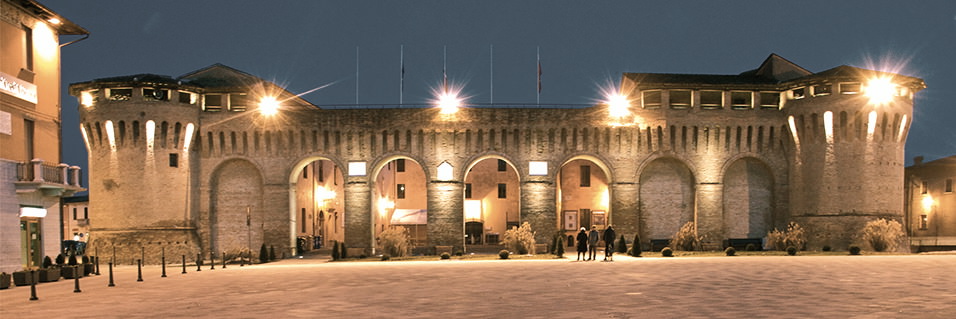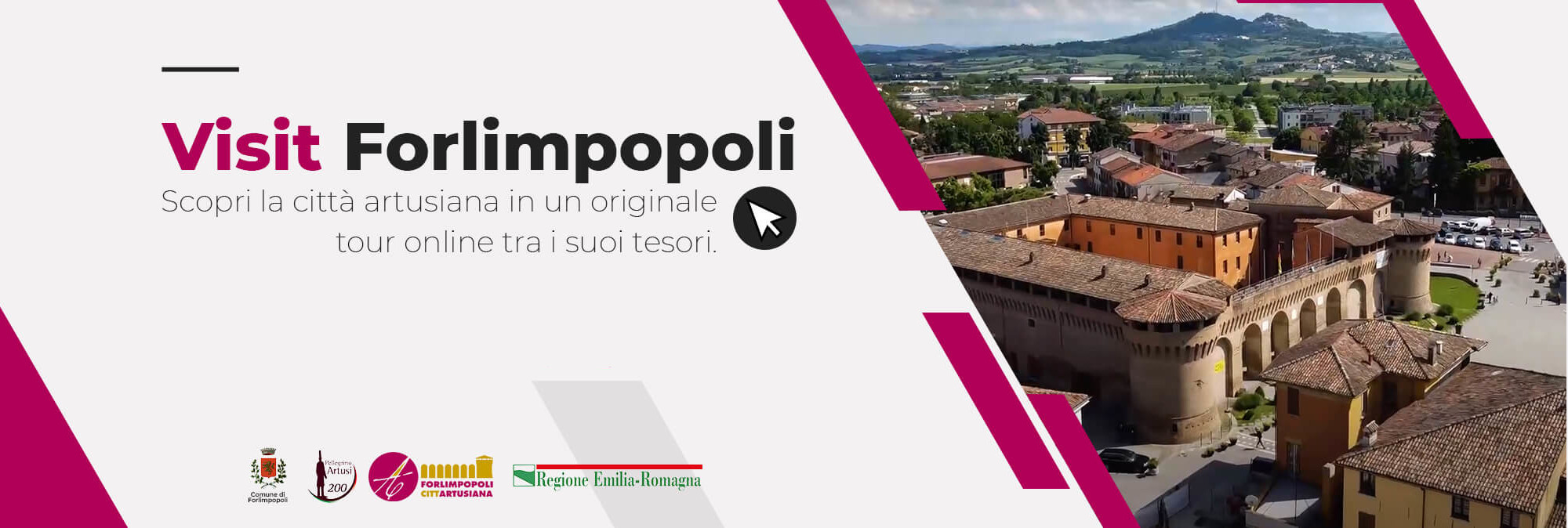
In the past, people crowned their banquets with a celery plant, believing that by doing so they would counter the fumes of the wine.
Pellegrino Artusi, Recipe no.412
In the 2nd century B.C., the Romans founded Forum Popili in the heart of the region of Romagna because of its favourable position. The forum expanded and prospered for centuries.
Proof of that past can be admired in the rooms of the Museo Archeologico Civico Tobia Aldini, the town’s archaeological museum, where a number of collections tell of the ancient town, although much is still unknown to us today.
The lion’s share of the museum’s exhibits is taken up by the many Roman amphorae with their characteristic flat base, one of a kind produced exclusively in the kilns of Forlimpopoli. Used to carry wine and oil, they testify the age-old agricultural vocation of the town and the tendency, which remains unchanged, to promote the products of this land through trade.
The museum is housed within the Rocca (fortress) which once belonged to the powerful Ordelaffi family, the seigniory of Forlì between the 13th and 16th centuries. It is also where the town council offices are located along with the charming nineteenth century Giuseppe Verdi theatre. The theatre made the history books following one dramatic evening in which the Passatore, a famous highwayman of the time, and his gang burst in during a performance on the 25th January 1851, wreaking havoc.
Overlooking Piazza Garibaldi, the town’s main meeting place, the Rocca is an excellent starting point for setting out to discover the rich heritage of history and art: from the San Rufillo basilica, with its highly valuable works of art, to the dei Servi church where visitors can admire the precious Annunciazione by Marco Palmezzano.
For more information
- www.comune.forlimpopoli.fc.it, the ‘storia e monumenti’ (history and monuments) section of the town council’s official website
- www.forlimpopolidocumentiestudi.it, official website of the Museo Aldini magazine
Itineraries
Forlimpopoli between the Fourteenth and Fifteenth Centuries: a journey retracing the signs of mediaeval Forlimpopoli to discover the ruins that survived Albornoz’s destruction.
Renaissance Splendour: an itinerary to discover sixteenth-century Forlimpopoli.
The eighteenth century, the century of wonder: a journey to discover Baroque Forlimpopoli amid churches, palaces and monuments
The New Factories of the Nineteenth Century: an itinerary to the monuments, palaces and roads redesigned in the nineteenth century
Memories of the Risorgimento: the itinerary includes the celebratory monuments dedicated to the heroes of the Risorgimento.
The Architecture of the Fascist Ventennio: the itinerary connects the buildings that are part of the “Atrium Route”, a European project that safeguards the architectural heritage of twentieth-century regimes
In the footsteps of Artusi: itinerary to discover Pellegrino Artusi, the illustrious gastronome who thanks to his manual unified Italy at the table for the first time ever


